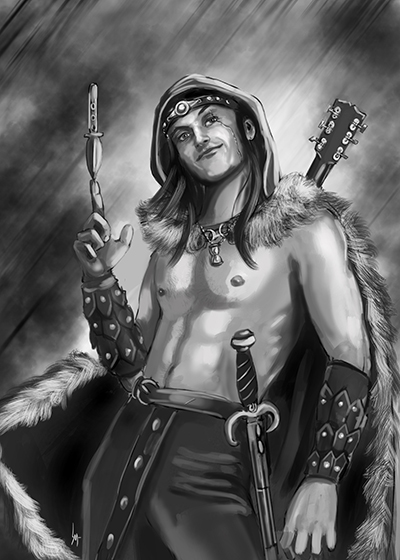The Secret of Dexterity

 Think there’s no way to screw up the rules for Dexterity? You must misunderstand the FAIL in Fail Squad Games!
Think there’s no way to screw up the rules for Dexterity? You must misunderstand the FAIL in Fail Squad Games!
Previously we took a look at Strength, Intelligence and Wisdom. Now it’s time to look into Dexterity and how the Fail Squad Gamers have often misused it, house ruled it or glazed over it.
For this we look to the AD&D Players Handbook (1e Easley Cover) page 11& 12.
What is Dexterity?
Our Friend Gary Gygax described the core of Dexterity this way:
Dexterity encompasses a number of physical attributes including hand-eye coordination, agility, reflexes, precision, balance, and speed of movement
The text further goes on to acknowledge that a character may be good at ONE of those things and terrible at others, but the the score is a general reflection of all the abilities summed up in one place.
This all seems pretty standard, thieves are granted a 10% XP bonus for high dexterity as it is their main attribute. Very good, stuff we all know and incorporate into our games!
Dexterity Table I
What follows the description is the Dexterity Table I that has some interesting bits.
- At 5 or lower the character can ONLY be a Cleric.
I can accept this as all the other classes don’t work well with bumbling and fumbling to excessive degrees.
- 6 is the minimum for half-elves and mages.
Also makes sense. While 6 is not graceful, the elves would be less likely to be bumbling about.
- 7 minimum for an elf
- 8 Minimum for a hlafling
This one is a little surprising. Halflings are more dexterous than elves. I can only assume this is inspired by a certain Mr. Underhill and his ability to pick pockets – or hide rings in them.
- 14 is the maximum of a half-orc.
This again reinforces the bar for half-orc not being monks. I suspect Gary only liked the idea of them being warriors or barbarians.
- 16 is the minimum for illusionists
As DMs we should take note of this. This is a testament regarding the complexity of illusionist spells and component use. An illusionist should really be put to the test when casting upper level spells.
- 17 is the maximum for Dwarves
Where we Failed
We would go through the table, look at our bonuses or penalties and apply them to our adjustments on the character sheet. Reaction / attacking we assumed for surprise and to-hit with missile weapons, the defensive was an armor class bonus or penalty.
The piece that follows the chart is the part where we diverted from, or glazed over the rules. There is a section below the table titled: Notes Regarding Dexterity Table I
The reaction adjustment ALSO applies to saving throws against certain attacks. Fireballs, lightning bolts and other spells that conjure something you might dodge should be taking into account your dexterity adjustments when making a saving throw!
Dexterity Table II
This table is pretty straight-forward without surprises. This illustrates the bonuses applied to thief abilities as they relate to dexterity. I would have liked to see this under the “thief” section as well so when you create a character you didn’t need to bounce all over the book to get your ability numbers. That is a layout gripe though, and not a rules misinterpretation.
So polish up your notes – and note that Dexterity bonuses apply to some of those saving throws. Would this have saved any of your characters who didn’t save vs fireball?
Also see the articles on Strength, Intelligence, Wisdom, Dexterity, Constitution, and Charisma.




I just wanted to point out that the max 14 dex for half-orcs was a misprint, corrected in later printings. Half-orcs after all were also one of the preferred races for assassins. The correct max was 17. Tgis was also addressed in a Sage Advice or something in Dragon Magazine. Sadly I only found out about that much later. The guys I played AD&D with all had early printings of the PHB.
huh. I never heard that before. of course, we didn’t get Dragon mag either.